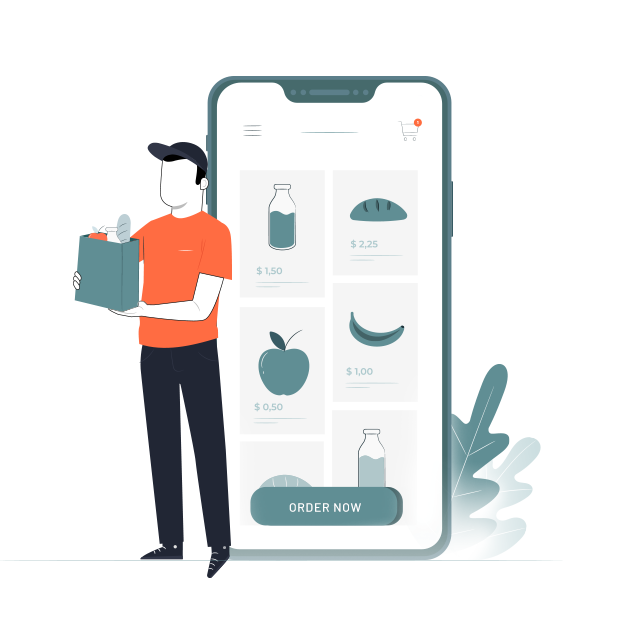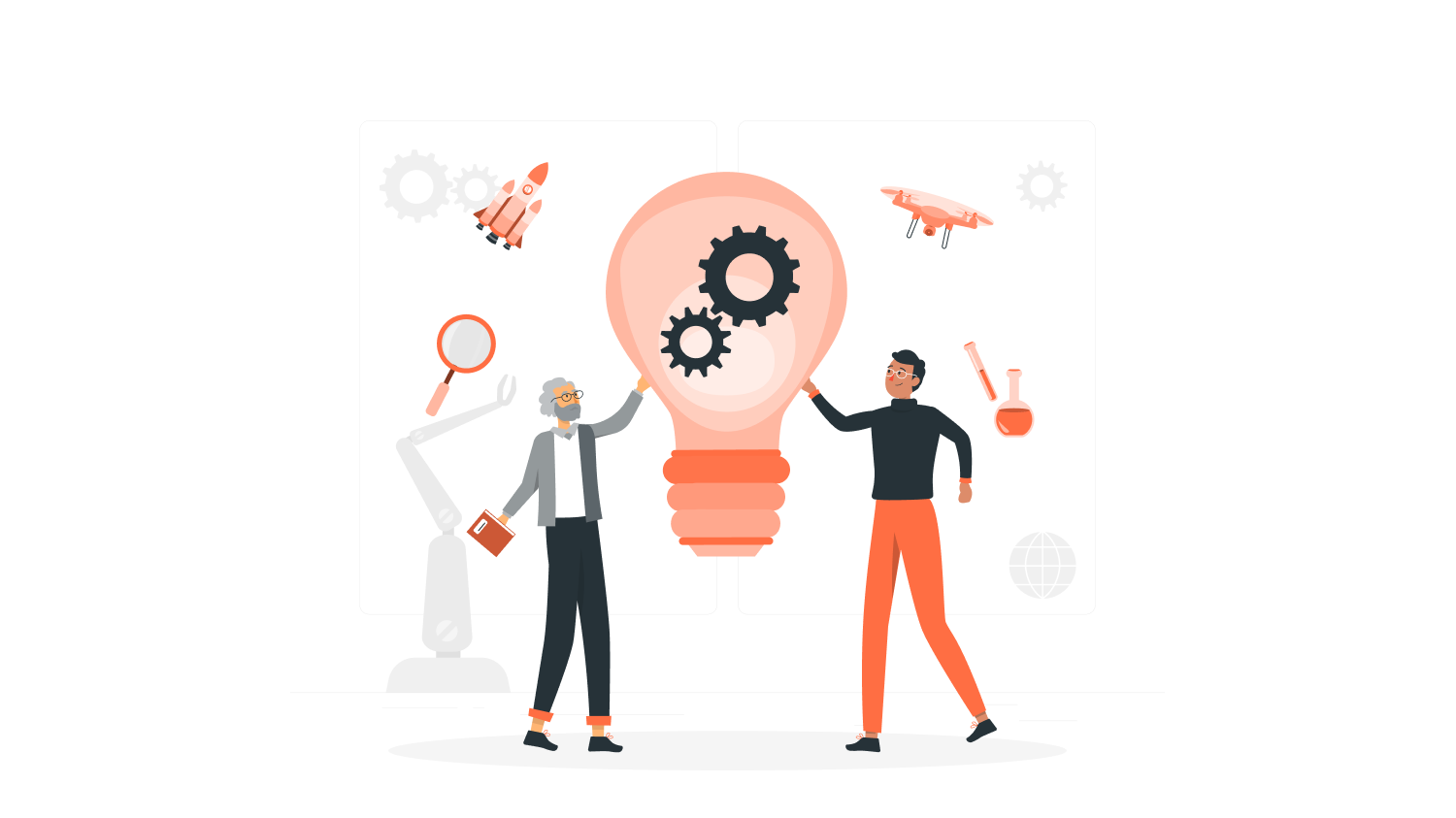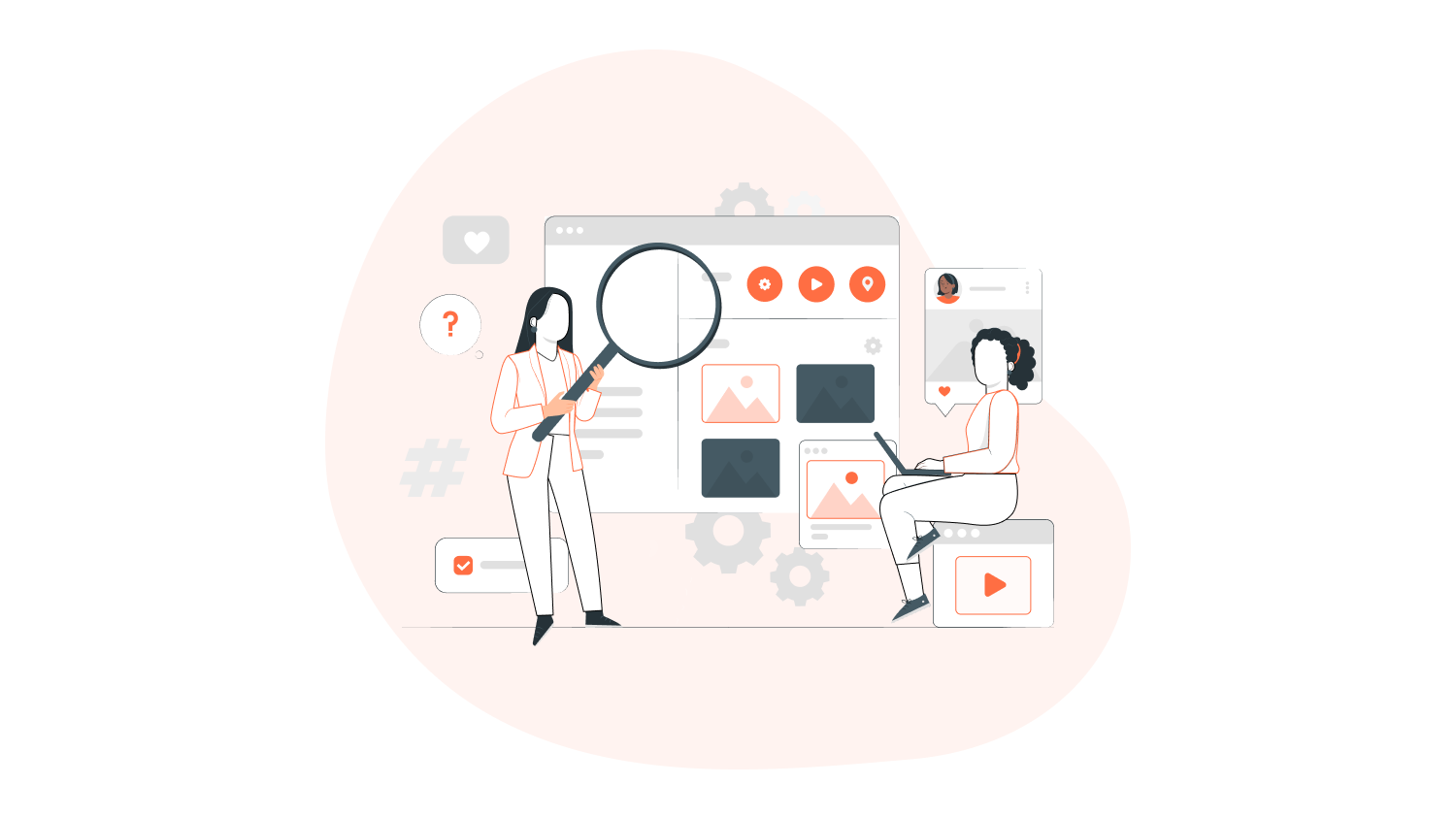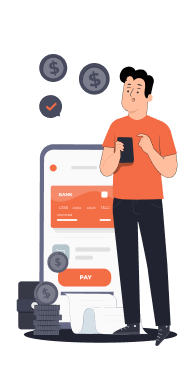These days, everything can be accomplished with a few taps on our smartphones. Many aspects of our daily lives have been made substantially easier because of the digital revolution that began many years ago. Deliveries have also been affected, as consumers increasingly prefer to purchase online rather than at a brick-and-mortar location. After the worldwide pandemic and the COVID-19 outbreak, smartphone ordering of food, beverages, and groceries soared threefold. Since then, the market for grocery app development has skyrocketed.
Delivering food will become a need for both online and traditional businesses in the next five years, according to a CNBC analysis. Because of this, it’s an excellent time to start thinking about launching an app for grocery delivery services or connecting with an aggregator to remain on-demand and avoid failure during this challenging period. This tutorial is for you if you want to design a grocery delivery app and flourish in this market segment.
What is a grocery app, and why build one?
Grocery delivery app has become the new way of life. Customers like the convenience of an on-demand grocery mobile app. A wide variety of food items are available for purchase. Just swipes, and they’ll be paid right away. Even most supermarket delivery apps now provide a buy-now, pay-later option.
A custom grocery app could combine all the essential elements required for the online grocery store. It is where your customers may receive apps for groceries delivery without having to wait or without prior experience with technology. Your consumers will only see your photos, phrases, and branding.
Learn more: How to Build a Food Delivery App (Like Uber Eats)
Why do people like on-demand grocery delivery apps
Comfort and convenience
The grocery delivery app is supposed to make life easier for its customers. Grofers and Walmart provide on-demand grocery delivery services that make it easy for people to get the food they need. Because of the app, they don’t have to wait in an extensive line for lengthy periods. The software will allow them to get whatever they want from an online grocery store and deliver it to their home.
Time-saving
Users may save much time and work by using on-demand apps. On-demand app development comes in handy for various reasons, like making it easier for consumers to shop when they’re busy or allowing them to make purchases while they’re on the go. It is possible to save a lot of time by using on-demand apps for various tasks, such as traveling to the shop and returning to one’s own house.
Dig deeper: Top 11 Time Management Tips for Entrepreneurs to Boost Their Productivity
Money-saving
An app that delivers groceries to your door can help you save money by offering discounts, loyalty points, special deals, and coupons that can only be found on the app. Users can save money by using on-demand shopping apps.
Shop and receive anywhere
Groceries may be ordered online and delivered right to your doorstep. Customers may easily add the addresses of friends and family members to their shopping carts to have their purchases delivered. Customers, both current and potential, will like this feature much.
Also read: A Step by Step Guide to Build an On-Demand Courier Delivery App
Essential features of grocery shopping apps
Our grocery delivery app must include the most requested features and be user-friendly without being overpowering to be a significant success. What are some of the most common elements in supermarket applications aimed at consumers?
Virtual shelves
As a first step, we require a comprehensive product catalog listing each item under its appropriate category. In this section, we’d include product cards with descriptions, photographs, nutritional information, suggestions, tags, and anything else a buyer would need to purchase.
Stress-free registration
There should be an easy-to-use registration process. Offering several social media identities to clients might be a terrific strategy to keep them and bring in additional visitors simultaneously.
Grocery checklist
A must-have tool for those who want to manage their shopping lists before they begin to spend money in your grocery app.
Price comparison
Another must-have feature for a grocery shopping app is comparing prices of identical goods from different companies. This functionality allows customers to reach similar interests without leaving the app.
Delivery scheduling/tracking
Building a grocery delivery app is only possible with some level of geolocation functionality. Customers should choose from a variety of delivery choices and pick-up orders. We can also include a delivery tracking map.
Personalization
The consumer must enter an address search and the user’s location. To create a special grocery delivery software and service, you must surpass their expectations: the more the consumer’s pleasure, the greater the possibility of repeat orders.
Push notifications
It’s a terrific way to get customers to use the app more frequently. As a result of push notifications, you’ll be able to keep your consumers updated on specials, discounts, and more.
Multiple payment options
Customers will appreciate how simple it is to pay for their groceries if your supermarket app accepts various payment options, such as cash on delivery, credit and debit cards, digital wallets, and net banking.
Steps in building a grocery delivery app
Concept and objective
An idea and an analysis of the end project’s goal are the initial steps in creating a grocery delivery app. You must consider your intended audience, the sort of app you desire, the problem the app will answer, and its method. You’ll also come up with the necessary technological stack and the time and resources required to construct the product from the start as a result of this phase. At this point, you can learn more from your competition and develop innovative ideas that elevate your apps above the rest of the market.
Prototype
The next step is to create an interactive prototype to test your product concept with your target audience. Developing and testing software consumes the most time and resources of any stage of the software lifecycle.
UX/UI designers still have to think about user experiences and put them into wireframes and mockups, so the process is a bit of a stroll in the park. On the other hand, an interactive prototype may be built with minimal work. Furthermore, you may iterate fast toward your desired goals because no code is involved.
Development
The UI/UX team’s work should be practiced during the iterative development phase. During this phase, programmers create all of the app’s features, which the quality assurance team evaluates. If everything is set up correctly, you should ensure that the finished product addresses the primary issues you identified in the early stages of development.
Testing
Testing is the final step in constructing your grocery app when everything is finished. This section should be handled by your QA team, which should test the app in the steps that follow:
- Testing in the context of the entire system
- Tests for the integration of systems
- testing of the system
- Tests to ensure that the product will be accepted
Launching
Mobile apps and online content are released to the App Store and Google Play, while the latter is moved into production. This step takes little time. Some firms need to set up a DevOps environment during the development phase. Only release the app if they have the CI/CD pipeline.
Maintain
The maintenance process is an extension of the design process. A grocery delivery app’s performance, difficulties, and user engagement will inevitably inspire the development of new features and enhancements. Artifacts like app use metrics and problem reports are helpful since they may be re-used in the development process (and for new features in the prototyping/design phase).
Deep dive: How to Create an App in 2022: Make an App in 9 Easy Steps
Grocery app development cost
Regarding grocery delivery apps, various variables influence the final price. The following are the factors that have the most impact on the cost of developing an app:
App intricacy
Regarding grocery app development, the most significant cost factors are the degree of app complexity and the number of features you’re prepared to include.
Size of the development team
App development costs are directly related to the number of app developers working on the project. Incorporating specialized developers and specialists might affect the pricing.
Choice of platforms
Android and iOS are the most popular mobile platforms in today’s world. As a result, the cost of your application is heavily influenced by the venue you choose.
Preferable location
In different parts of the world, developers charge different hourly rates for their services. The company’s resources, knowledge, and experience vary widely.
Find out more: Top 10 Tips to Reduce Your App Development Costs
Challenges of making a grocery shopping app
You’ll need to overcome several hurdles to build a grocery shopping app that outperforms the competition and becomes a household name.
Low-cost margins consuming profits
Online grocery shopping is a dream for customers who want to get their essentials without leaving their homes’ comfort. Maintaining pricing when the product is sold online makes it harder to create a decent margin for buyers.
Spoiled inventory management
Businesses are eager to tackle the problem of waste. Inventory expenses can be reduced by using just-in-time supply systems and cutting-edge APIs for supermarket inventory management. Online grocery shopping and delivery software may allow you to design a new module.
Cost to delivery and other resources
Warehouses are an excellent option for storing some perishable goods. Delivery guys and shipping containers are needed. This necessitates substantial outlays of cash to cover the cost of acquiring specialized equipment.
Changing consumer behavior
A grocery store’s profitability depends on various marketing capabilities like blog administration, discount coupon production, affiliate management, sponsored ad management, and more. As customer expectations continue to rise, you’ll need a marketing plan. Pre-installed marketing tools should be included in the plan’s grocery delivery and ordering software. Additional aspects, such as the availability of mobile applications, substantially enhance the experience.
Lack of delivery to small towns or some areas
Customers who need to know where the service is available want it to arrive quickly. There are a lot of variables that go into the delivery process, including quality, timing, cost, and product. They have an impact on the system in small towns and rural regions where distribution is not possible.
Technical issues
The amount of data the app syncs and regularly caches from servers makes it difficult to design a grocery-related mobile application. Another challenge is synchronizing with legacy inventory systems that use obsolete APIs.
Wrapping up
Building an on-demand grocery delivery app can be a complex and time-consuming task. Still, it is also an opportunity to tap into a growing market and provide customers with a convenient and efficient way to order groceries. By understanding the development process, key features, and best practices for building an on-demand grocery delivery app, businesses can make informed decisions about how to proceed. And by working with a reputable software development company like NeoITO, businesses can access the expertise and resources they need to build a high-quality, user-friendly grocery delivery app that meets the needs of their customers and drives growth for their business. NeoITO can help with the development, testing, and deployment of the app, as well as the maintenance and updates of the app.
FAQs
What are the key features of an on-demand grocery delivery app?
The key features of an on-demand grocery delivery app include the ability to browse and order groceries, real-time order tracking, multiple payment options, and support for in-app offers and discounts.
How much does developing an on-demand grocery delivery app cost to develop?
The cost of developing an on-demand grocery delivery app can vary depending on the app’s complexity, the features included, and the development company chosen. However, it is a significant investment that can run into hundreds of thousands of dollars.
What are the best practices for building an on-demand grocery delivery app?
Some best practices for building an on-demand grocery delivery app include focusing on user experience, ensuring the app is reliable and secure, and incorporating features such as real-time order tracking and in-app offers and discounts.
How can a grocery delivery business benefit from having an on-demand delivery app?
A grocery delivery business can benefit from having an on-demand delivery app by increasing efficiency, improving customer experience, and expanding the reach of their services through the ability to browse and order groceries, real-time order tracking, and in-app offers and discounts.
How can NeoITO help a grocery delivery business build an on-demand app?
NeoITO can help a grocery delivery business build an on-demand delivery app by providing software development services such as coding, testing, and deployment, as well as support with strategy, design, and ongoing maintenance and updates.





